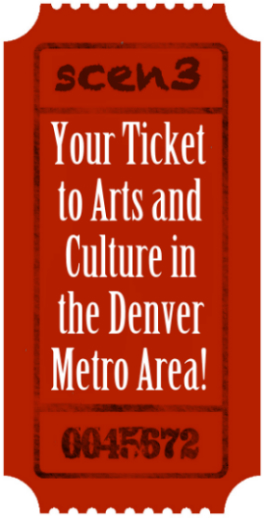Ars Nova Singers’ “Shared Visions”
A review by Gwen Gray
What would it feel like to hear a poem of your own creating rise up, take flight and fill your ears with angelic voices through the force of an entire choir? You had only to look at Rosemerry Wahtola Trommer’s tear-streaked face Saturday evening to get an idea. As the Western Slope poet laureate stepped onto the stage beside Paul Fowler, the composer who had interpreted her poem into a song for the Ars Nova Singers, the audience and artists were visibly moved.
It was just one of many touching moments in Ars Nova’s sold-out “Shared Visions” performance, which took place April 30, 2016 at St. John’s Episcopal Church in Boulder. The evening was a fittingly triumphant end to its 30th season, and an ambitious program that spanned two and a half hours and swept through a dozen songs, earnest discussion, and viola playing by guest soloist Matthew Dane.
Fans packed the house, and the occasion drew a visit from revered composer Dale Warland, conductor of the celebrated Dale Warland Singers and onetime mentor to Ars Nova’s artistic director and conductor Thomas Edward Morgan.
The evening’s main billing, “Shared Visions,” was a series of four new works that were the culmination of 20 years of preparation and collaboration led by Morgan. But the program was also bookended by an exquisite tribute to three recently deceased composers (Stephen Paulus, Luis Jorge González and Steven Stucky) and an abridged Ars Nova “greatest hits,” as finale.
The “Shared Visions” portion of the evening was a study in brilliant audience engagement. The choir sang four works that were, in a sense, the result of an artistic game of telephone that began over a year ago when the Ars Nova board of directors shared an online gallery of 23 works by seven Colorado visual artists. Then, 19 Colorado poets submitted 61 original poems inspired by the visual works in the gallery. The new poetry was assembled into an anthology and presented to four commissioned Colorado composers — Daniel Kellogg, Paul Fowler, Conor Brown and Thomas Edward Morgan. They, in turn, selected one poem each and composed a new choral arrangement in response. Morgan’s description of the process, and the printed program’s full-color representation of the artworks and their accompanying ekphrastic poems, kept the audience rapt.
As the Ars Nova choir’s voices filled the church in each “Shared Visions” piece, the art-poem-song trios seemed to click into comprehension. In Daniel Kellog’s “Prayer,” for example, the ensemble’s uplifting repetition of the corresponding poem’s line, “to rise and face the coming sun” drew all eyes to the once-mysterious, black, upright rectangle on the left side of Helen Howe Braider’s striated painting, “Intervals No. 2.”
Similarly, in Paul Fowler’s “Yet Another Layer,” listeners were immediately “steeping, steeping, steeping” in the lyrics, inside a warm swell of voices, eyes darting to the associated poem’s first stanza, “Steeping so long / in this coat of shoulds / I forgot it was on,” and then back to the image of Wewer Keohane’s mixed-media piece, “Tea Ceremony” — an outstretched kimono constructed of steeped tea bags.
Conor Brown’s composition “Portals: Pollination” bloomed enigmatically outward, as did the creeping “hyphae” and resting insects depicted in Julie Maren’s painting “Seduction” and Erin Robertson’s superbly crafted poem “Portals: Pollination” which speaks of “fertile ground / for some other soul to tread” — all three pulsating with depth, desire and loss.
And in Morgan’s own “Balancing,” which at times was as mighty as the elephant in Kevin Sloan’s riveting painting “Our Fragile Past” and at others as flickering as a hummingbird’s wings, it did feel as though an equilibrium was struck “between planets and gravity / breathing time into teacups,” as Megan E. Freeman’s poem suggests.
At a break in between the four “Shared Visions,” Matthew Dane, principal violist of the River Oaks Chamber Orchestra in Houston and member of the Baroque Chamber Orchestra of Colorado, grinningly took to the stage and explained that the strange blonde beauty in his hand was, in fact, a 14-stringed baroque instrument called a viola d’amore. He then dazzled the crowd by playing a raga-inspired composition called “Nishini” that composer Reina Esmal created specifically for Dane’s rare instrument.
Arts organizations tend to worry about their future audiences — it’s an undercurrent of nearly every programming-related conversation — but I’m not sure it’s a concern that Ars Nova needs to fret over. While the end of the evening’s performance was a look back at a few of Ars Nova’s most popular pieces — including the reverie-inducing “Deep Peace” by Bill Douglas — the organization is clearly quite future-focused.
Morgan said as much after giving special recognition to high school apprentice and songbird soloist Logan Riley. But I’d say it’s true well beyond the mining of young talent: There’s the ensemble’s innovative programming, which cleverly elevates the collaboration model that arts organizations rely on to thrive. There’s a willingness to embrace online tools — such as the digital collaboration that helped build “Shared Visions” and the group’s Kickstarter program that raised over $5,000. Most importantly, there’s group’s sheer artistic talent, which makes a lingering impression on listeners.
In fact, already on her blog, A Hundred Falling Veils, Rosemerry Wahtola Trommer has shared a new poem alongside the dedication, “listening to Matthew Dane play viola d’amore to a piece by Reina Esmail.”
Is there any greater evidence of the power of musical performance than its ability to go on creating a life of its own in its listeners?













